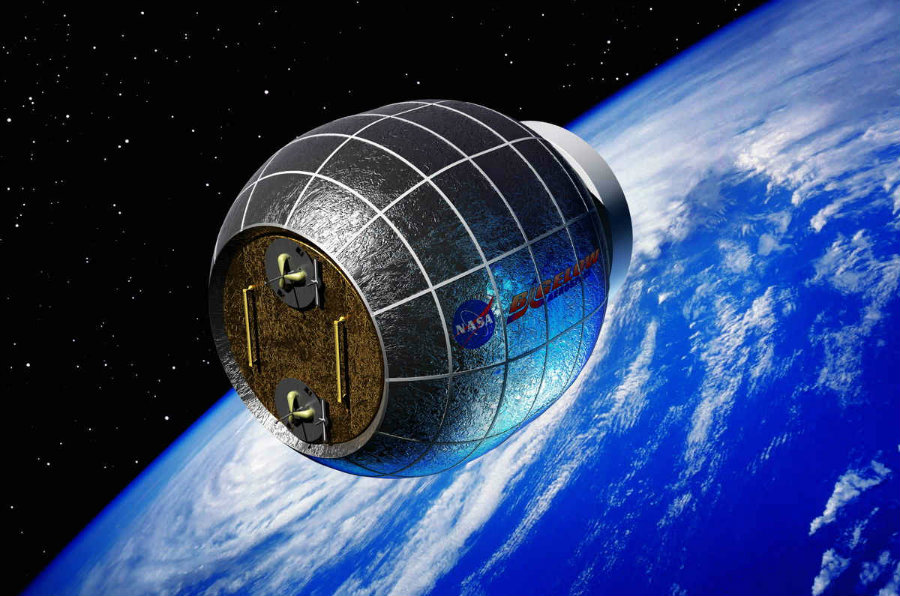Bigelow Aerospace has been working towards launching inflatable and economical space stations into space. The launch of the upcoming inflatable space habitat is planned for 2020, according to a statement by United Launch Alliance.
The spacecraft is named B330, and it sports 330 cubic meters of internal space. It has both scientific and touristic applications, as it is also expected to be used for missions to the Moon and Mars.

Bigelow’s inflatable space habitat
Currently, a test of one of Bigelow’s space habitats is being tested on the International Space Station. The Bigelow Expandable Activity Module is to be installed in the ISS’s Tranquility module, it will remain attached to the station for two years of tests and it is expected that inflatable modules become a standard feature of the spacecraft. Currently, scientists are testing working conditions in space, such as vision, bone and muscle functions and overall work performance.
This Saturday, NASA mission controllers will direct ISS’s Canadarm2, a robotic arm, in order to take the Bigelow Expandable Activity Module from SpaceX’s Dragon capsule, which was launched earlier last week and it is now docked to the ISS. After its attachment, cosmonauts will enter the module and then perform the subsequent tests in order to approve the habitat for further research efforts.
The implementation of these inflatable modules is a true game-changing statement in space exploration.
Tory Bruno, president and CEO of the United Launch Alliance, has stated that these new advances “will dramatically increase opportunities for space research in fields like materials, medicine and biology.”
The inflatable modules will allow companies, countries and even tourists to reach space work environments much easily.
Among the research efforts related to the difference between spatial and terrestrial work environments, there’s the analysis of heart functions performed by Alexey Ovchinin and Oleg Skipochka, with the objective of understanding the changes that occur in the cardiovascular system during spaceflight.
Bigelow Aerospace is a company that develops expandable systems for space missions and structural tasks. The habitats developed by Bigelow are to be used either in orbital circumstances or attached to a larger space station. The B330 is able to connect itself to another B330 module. It is expected that Bigelow releases further space modules to use in both lunar and martian surface, as the fact that they’re inflatable renders its transport very economic and safe when compared to current aluminum-based structures used in current space exploration endeavors.
Source: ULA Launch statement
